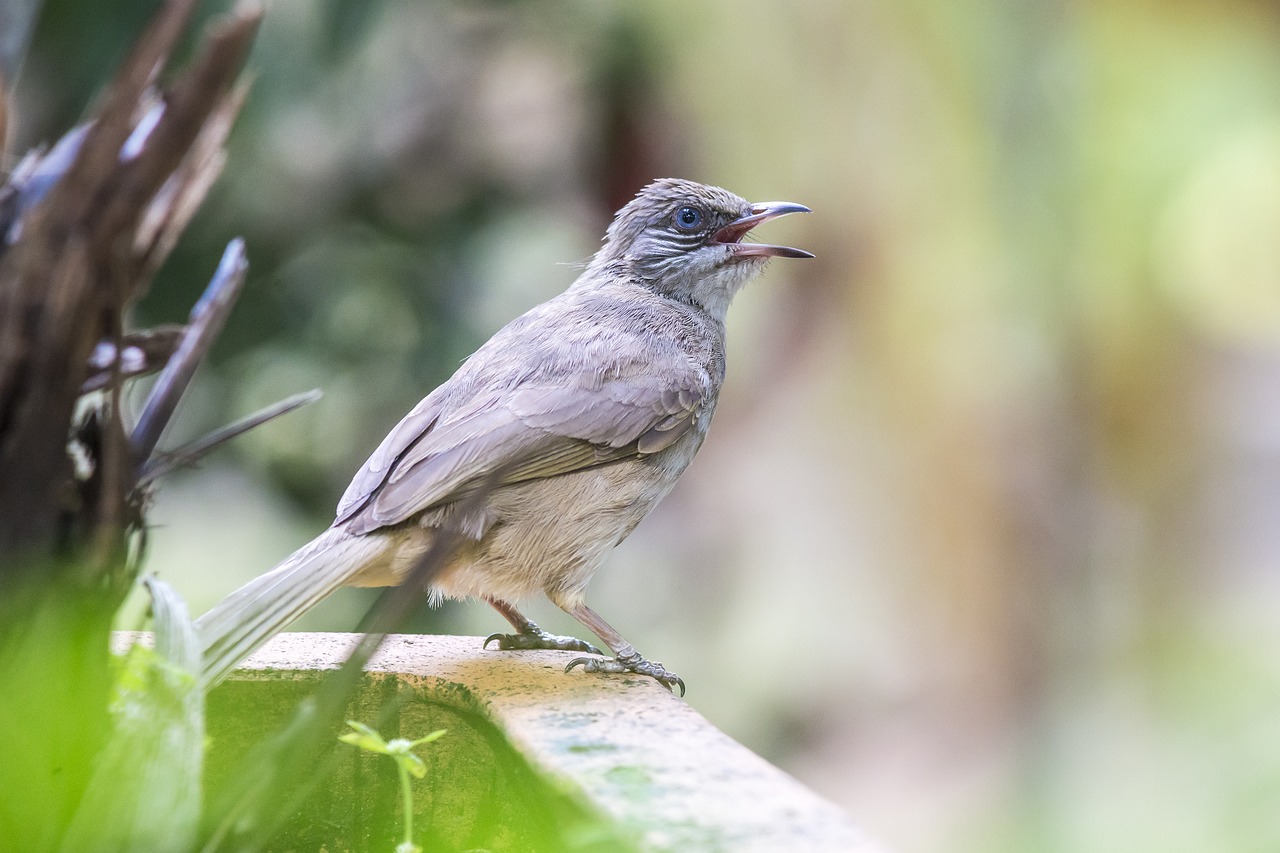The Streak-eared Bulbul (Pycnonotus conradi), also known as the Green-billed Bulbul, is a common bird found in Southeast Asia. This species is known for its distinctive streaked ear coverts and its adaptability to various habitats. Here is a detailed overview of the Streak-eared Bulbul:
Description
- Size: The Streak-eared Bulbul is a medium-sized bird, typically measuring about 20 to 22 centimeters (8 to 9 inches) in length.
- Appearance:
- Plumage: It has olive-brown upperparts and yellowish underparts. The most distinctive feature is the streaked ear coverts, which give the bird its name.
- Head: The head is olive-brown with faint streaks on the ear coverts, a pale eye ring, and a greenish bill.
- Eyes: The eyes are dark brown, surrounded by a pale ring.
- Tail: The tail is relatively long and slightly rounded, with a darker coloration compared to the body.
Habitat
- Distribution: The Streak-eared Bulbul is widely distributed in Southeast Asia, including Thailand, Cambodia, Vietnam, Laos, and parts of Myanmar.
- Preferred Environment: This species thrives in a variety of habitats, including forests, shrublands, gardens, plantations, and urban areas. It is particularly common in lowland regions but can also be found in hilly areas.
Behavior and Ecology
- Diet: The Streak-eared Bulbul is omnivorous, feeding on a wide range of food items such as fruits, berries, seeds, nectar, and insects. They are often seen foraging in pairs or small groups.
- Vocalization: They have a varied and melodious song, which includes a series of whistles, chirps, and trills. Their calls are often used to communicate with other members of their species.
- Social Behavior: These birds are generally social and can be found in small flocks, especially outside the breeding season. They are also known to join mixed-species foraging flocks.
Reproduction
- Breeding Season: The breeding season varies depending on the region but generally occurs during the rainy season when food is abundant.
- Nesting: The Streak-eared Bulbul builds a cup-shaped nest using twigs, grass, leaves, and other plant materials. Nests are typically placed in bushes or trees.
- Eggs and Incubation: Females lay 2 to 3 eggs, which are incubated for about 12 to 14 days. Both parents take part in feeding the chicks after they hatch.
- Fledging: The chicks fledge about 12 to 14 days after hatching but remain dependent on their parents for several weeks.
Conservation Status
- Threats: The Streak-eared Bulbul faces threats from habitat destruction due to deforestation and urbanization. However, it is adaptable and can thrive in a variety of modified habitats, which helps mitigate these threats.
- Conservation Efforts: Currently, the species is not considered to be at significant risk. Conservation efforts focus on habitat preservation and promoting sustainable land-use practices.
Interesting Facts
- Adaptability: One of the reasons for the Streak-eared Bulbul’s success is its adaptability to a wide range of environments, including urban areas where it can often be seen in gardens and parks.
- Role in Ecosystem: As both a seed disperser and insect predator, the Streak-eared Bulbul plays an important role in its ecosystem, helping to maintain plant diversity and control insect populations.
Observing Streak-eared Bulbuls
- Best Places: To observe these birds, visit areas with abundant vegetation such as gardens, parks, forest edges, and plantations in Southeast Asia.
- Watching Tips: Early morning and late afternoon are the best times for birdwatching, as the Streak-eared Bulbul is most active during these periods. Bring binoculars and a field guide to help identify these and other bird species.
The Streak-eared Bulbul (Pycnonotus conradi) is a resilient and versatile bird species, thriving in a variety of environments and contributing significantly to its ecosystem. Its distinctive appearance and melodious calls make it a delightful bird for both casual observers and avid birdwatchers.
Visited 183 times, 19 visit(s) today
Views: 313
Subscribe to the newsletter:
